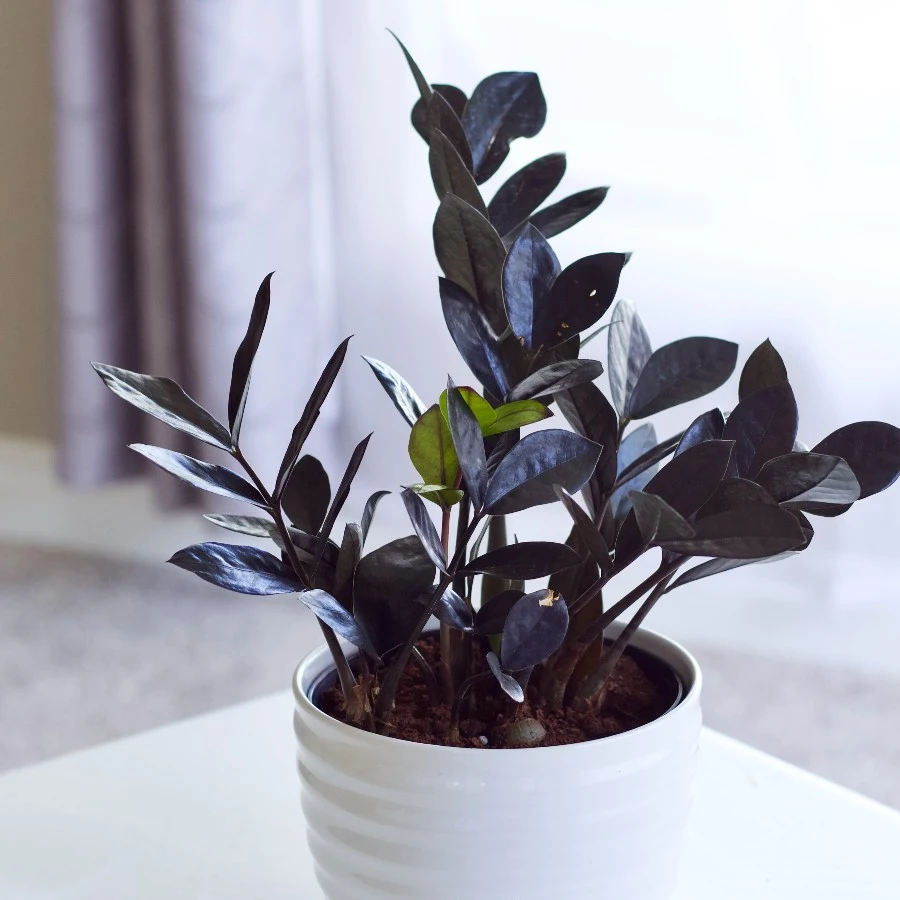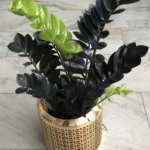
Can ZZ Plants Thrive Outside? Tips for Growing ZZ Plants Outdoors Successfully | This gardening guide covers whether ZZ plants can live outside year-round or need protection from frost. Learn about acclimating ZZ plants to the outdoors, ideal sun exposure, watering, overwintering indoors, and troubleshooting problems when growing these tropical plants outside in pots or garden beds.
The ZZ plant (Zamioculcas zamiifolia), also called the Zanzibar gem or ZZ palm, is a popular houseplant known for its easy care requirements and ability to thrive in low light. But can these indoor favorites also grow outside successfully?
More ZZ plant topics
ZZ Plant Propagation is Super Easy – Here’s How to Do It
The Raven ZZ Plant: The Must-Have Houseplant Trend
Discover Chameleon ZZ Plant: A Colorful Wonder
About ZZ Plants

Native to eastern Africa, ZZ plants are characterized by their oval-shaped, dark green leaves that emerge from underground rhizomes. Their thick, waxy foliage enables them to retain moisture and handle periods of neglect. While ZZ plants prefer bright, indirect light indoors, they can tolerate more direct sun exposure outside.
ZZ plants are slow but steady growers, potentially reaching 2-3 feet tall indoors and larger outside. They are non-toxic, pet-friendly plants that can help purify indoor air. There are also variegated varieties with white-striped leaves.
ZZ Plant Care Needs

To determine if ZZ plants can go outdoors in your area, it’s important to understand their basic care needs:
- Light: ZZ plants need at least some direct sun daily and do best with 4-6 hours of sunlight. Too little light leads to sparse growth.
- Water: Allow soil to dry out between waterings. Overwatering causes root rot.
- Soil: Well-draining potting mix. Can be slightly dry and nutrient-poor.
- Temperature: Ideal range is 65-90°F. Avoid cold drafts.
- Humidity: Average room humidity is fine. ZZ plants are prone to root rot in very damp conditions.
Growing ZZ Plants Outdoors

While ZZ plants thrive as low-maintenance houseplants, they can also grow outside in the right climate if properly acclimated.
Hardiness Zone Considerations
ZZ plants require temperatures above 60°F, meaning they only survive being grown outdoors year-round in USDA hardiness zones 9-11. In cooler zones, they must be brought indoors before first frost.
Acclimating ZZ Plants
When moving a ZZ plant from indoors to outside, it needs time to adjust to increased light levels and lower humidity. Slowly introduce it to longer hours of sun over a period of 2-3 weeks to prevent leaf scorch. Hardening off plants is especially important when temps exceed 85°F.
Ideal Outdoor Location
ZZ plants grow best in a location receiving at least 4 hours of direct sunlight daily, such as a sunny patio or under a lightly shaded pergola or tree. Avoid reflected light from windows or pavements that can burn leaves. Morning sun is gentler than hot afternoon sun in warmer climates.
Prepare a site with well-draining soil or in-ground planter. Improve drainage by amending native soil with compost or perlite. ZZ plants are tolerant of poor, dry soil but excess moisture can still cause root rot.
Outdoor Care Tips

Caring for ZZ plants outside takes some adjustment from typical indoor care:
- Watering: Outdoors ZZ plants need more frequent watering, whenever the top few inches of soil become dry. But take care not to overwater as wet feet leads to root rot.
- Fertilizer: Apply a balanced liquid or slow-release fertilizer every 2-3 months during the growing season.
- Pests & Disease: Check regularly for pests like scale, mealybug or aphids. Root rot is the main disease issue – improve drainage and allow soil to dry out between waterings.
- Sun Protection: Use shade cloth or bring containers indoors if temps exceed 90°F for extended periods. Leaf burn can occur in intense afternoon sun.
Overwintering ZZ Plants

In zones 8 and below, ZZ plants must be brought back indoors before temps drop below 60°F once autumn arrives.
To transition plants back inside for winter dormancy:
- Cut back on watering for a few weeks before bringing inside
- Prune back any leggy growth and remove dead leaves
- Check closely for pests – quarantine if necessary
- Place in a sunny indoor location and resume normal care
ZZ plants enter a state of dormancy through winter when grown indoors, with reduced water needs and minimal growth.
FAQ
How much sun do ZZ plants need outdoors?

ZZ plants need at least 4 hours of direct sunlight per day outside but also appreciate some shade in peak summer. Morning sun is ideal in hot climates.
Should I bring my ZZ plant inside for winter?

If you live in zones 8 or below, bring ZZ plants inside before nighttime temps dip below 60°F or frost arrives. They enter dormancy over winter.
What size pot for outdoor ZZ plants?

Use a container 2-4 inches wider than the current roots allow for some growth. ZZ plants can be kept slightly potbound.
Can ZZ plants recover from overwatering?

ZZ plants are prone to root rot if overwatered but can often recover if dried out. Prune dead stems and allow soil to fully dry before watering again.



